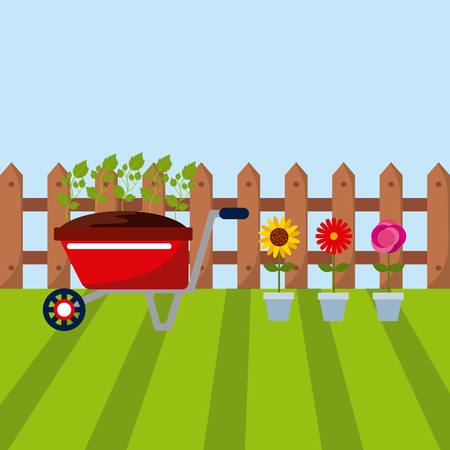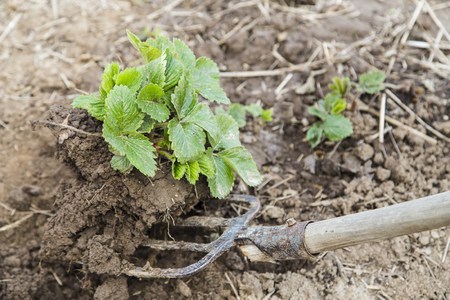1. Understanding Cover Crops and Their Role in Soil Health
Cover cropping is a smart and sustainable way to keep your garden soil healthy while cutting down on organic waste. In a zero-waste garden, every plant and process has a purpose — and cover crops are one of the most valuable tools you can use.
What Are Cover Crops?
Cover crops are plants grown primarily to benefit the soil rather than for harvest. They’re often planted during the off-season when your main crops aren’t growing, or they can be used between plantings to fill in gaps and protect the soil.
Common Types of Cover Crops
| Type | Examples | Main Benefits |
|---|---|---|
| Legumes | Hairy vetch, clover, field peas | Fix nitrogen, improve soil fertility |
| Grasses | Rye, oats, barley | Add organic matter, prevent erosion |
| Brassicas | Mustard, radish, turnip | Break up compacted soil, suppress pests |
How Do Cover Crops Work in Your Garden?
Cover crops act as living mulch. They protect the soil from erosion, reduce weed growth, and help retain moisture. Their roots improve soil structure by creating channels that allow air and water to move more freely. When cut down or tilled in, they become green manure — decomposing into rich organic material that feeds the soil.
The Role of Cover Crops in Soil Health
A key principle of zero-waste gardening is keeping your soil alive. Healthy soil is full of beneficial microbes, fungi, insects, and worms that help break down organic matter into nutrients plants can use. Cover crops feed these organisms by providing continuous root activity and fresh organic material. This leads to better nutrient cycling and stronger plants over time.
Benefits at a Glance
| Benefit | Description |
|---|---|
| Nutrient Boosting | Legume cover crops fix nitrogen from the air into the soil naturally. |
| Erosion Control | Covers prevent wind and rain from washing away topsoil. |
| Pest & Weed Suppression | Dense cover crop growth shades out weeds and disrupts pest cycles. |
| Soil Structure Improvement | Roots create pathways for water infiltration and microbial life. |
Tip:
If youre new to cover cropping, try starting with crimson clover or winter rye — theyre easy to grow and work well in most U.S. climates.
By understanding how cover crops function in your garden ecosystem, you’re taking a big step toward creating a thriving, low-waste space that supports both your plants and the planet.
2. Choosing the Right Cover Crops for Your Climate and Soil
When it comes to building a zero-waste garden, choosing the right cover crops is key to keeping your soil healthy and reducing organic waste. Different cover crops perform better in different regions and soil types, so its important to match your selections with your local climate and garden needs.
Understand Your USDA Hardiness Zone
The first step is knowing your USDA Plant Hardiness Zone. This tells you which plants are most likely to thrive in your area based on average annual minimum winter temperatures. You can find your zone by entering your zip code on the USDA website. Once you know your zone, you can choose cover crops that are proven to grow well there.
Identify Your Soil Type
Next, take a look at your soil. Is it sandy, clay-heavy, or loamy? Each type has its own strengths and weaknesses:
| Soil Type | Characteristics | Recommended Cover Crops |
|---|---|---|
| Sandy | Drains quickly, low in nutrients | Ryegrass, clover, vetch |
| Clay | Poor drainage, nutrient-dense but compacted | Daikon radish, oats, crimson clover |
| Loamy | Well-balanced texture and fertility | Most cover crops thrive here: peas, buckwheat, rye |
Match Cover Crops to Seasonal Needs
Your planting season also affects which cover crops will work best. Some thrive in cool weather while others prefer the heat. Heres a quick guide:
| Season | Best Cover Crops | Main Benefits |
|---|---|---|
| Fall/Winter | Winter rye, hairy vetch, crimson clover | Erosion control, nitrogen fixation during dormancy |
| Spring/Summer | Buckwheat, cowpeas, sorghum-sudangrass | Weed suppression, fast biomass growth |
Tip:
If youre new to cover cropping, start with easy-to-grow options like buckwheat in summer or winter rye in cooler months. These are beginner-friendly and offer quick results.
Select Based on Garden Goals
Think about what you want from your cover crop. Are you trying to add nitrogen to the soil? Suppress weeds? Break up compacted ground? Here’s a handy reference:
| Goal | Crops That Help Achieve It |
|---|---|
| Nitrogen Fixation | Clover, vetch, peas (legumes) |
| Weed Suppression | Buckwheat, ryegrass, sorghum-sudangrass |
| Soil Aeration/Breaking Up Compaction | Tillage radish (daikon), oats |
A Final Note on Local Resources:
Your local extension office or university agricultural department can be a great resource for regional recommendations. They often provide free guides and even workshops tailored to gardeners in your area.
Selecting the right cover crop is all about understanding your garden’s unique conditions and goals. With the right match, you’ll improve soil health naturally while making use of plant materials that might otherwise go to waste—keeping your zero-waste garden productive year-round.

3. Integrating Cover Crops into a Zero-Waste Garden System
In a zero-waste garden, every piece of organic matter has value—and that includes the plants we grow not just for food, but for soil health too. Cover crops are a powerful tool for recycling nutrients, reducing the need for outside fertilizers, and minimizing green waste. By planting cover crops strategically, you can create a self-sustaining loop that keeps your garden productive and eco-friendly.
Why Use Cover Crops in a Zero-Waste Garden?
Cover crops aren’t just for large farms—they’re incredibly useful in home gardens too. These hardworking plants protect and enrich the soil during off-seasons or between crop rotations. Instead of removing spent plants and sending them to compost or landfill, cover crops help you use that organic material directly in your garden system.
Benefits of Cover Cropping in a Zero-Waste Setting:
| Benefit | How It Helps Your Garden |
|---|---|
| Nutrient Recycling | Deep-rooted cover crops pull up nutrients from subsoil layers, making them available to future vegetables when chopped and dropped. |
| Weed Suppression | Covers bare soil to prevent weed growth, reducing the need for herbicides or manual weeding. |
| Organic Matter Addition | Improves soil texture and fertility when plant residues break down in place. |
| Erosion Control | Keeps soil intact during heavy rains or windy conditions. |
| Pest and Disease Break | Interrupts life cycles of pests and diseases by rotating plant families. |
How to Incorporate Cover Crops into Your Garden Plan
Step 1: Choose the Right Type of Cover Crop
Select varieties based on your gardens needs. Legumes like clover and vetch fix nitrogen, grasses like rye add biomass, and brassicas like mustard can suppress soil-borne diseases.
Common Cover Crops for Home Gardens:
| Cover Crop | Main Benefit | Best Season to Plant |
|---|---|---|
| Clover (Red or White) | Nitrogen fixation | Spring or fall |
| Rye (Cereal Rye) | Adds organic matter & weed suppression | Fall |
| Austrian Winter Pea | Nitrogen fixation & edible shoots | Fall |
| Buckwheat | Quick biomass & pollinator support | Summer |
Step 2: Time Your Planting Right
Sow cover crops after harvesting summer veggies or before planting spring crops. This way, they fill gaps in your garden calendar without competing with food production.
Step 3: Terminate the Cover Crop Properly
You don’t need to remove cover crops—simply chop them down when they start flowering (before they set seed) and leave the residue on the ground as mulch. This “chop-and-drop” method fits perfectly with zero-waste gardening principles.
Step 4: Rotate Cover Crops Like You Would Vegetables
Avoid planting the same type of cover crop in the same spot year after year. Rotate between legumes, grasses, and brassicas to maintain balanced soil nutrition and prevent pest buildup.
Troubleshooting Tips for First-Time Users
- If cover crops get too tall: Cut them back before flowering to make chopping easier.
- If they go to seed: They may reseed themselves—great if planned, but manage carefully if not desired.
- If youre short on space: Try interplanting low-growing cover crops between rows of vegetables.
By weaving cover cropping into your zero-waste garden routine, you’re not only building healthier soil—you’re closing the loop on organic waste and creating a more sustainable growing system right in your backyard.
4. Timing, Planting, and Maintenance Best Practices
Cover cropping in a zero-waste garden isn’t just about throwing seeds in the soil—it’s about knowing when to plant, how to plant, and how to take care of your cover crops so they support healthy soil without creating extra waste. Let’s break it down.
When to Plant Cover Crops
The best time to plant cover crops depends on your goals and your local climate. In most parts of the U.S., gardeners use two main planting windows:
| Season | Best For | Common Crops |
|---|---|---|
| Late Summer to Early Fall | Winter soil protection, erosion control, nutrient storage | Cereal rye, winter wheat, crimson clover, hairy vetch |
| Spring to Early Summer | Weed suppression, nitrogen fixing, organic matter boost before summer crops | Buckwheat, oats, field peas, berseem clover |
How to Plant Cover Crops
You don’t need special equipment or fancy techniques. Here’s a simple method that works for most home gardens:
- Clear the area: Remove any weeds or leftover crops.
- Sow seeds evenly: Scatter by hand or use a seed spreader. Follow seed packet instructions for spacing and depth.
- Tamp down lightly: Press seeds into the soil with your hands or a flat board to ensure good contact with the soil.
- Add mulch if needed: A thin layer of straw or leaves can help retain moisture and protect seeds from birds.
- Irrigate gently: Water lightly after sowing if rain isn’t expected.
Caring for Your Cover Crops Without Waste
The goal in a zero-waste garden is to let nature do its thing while keeping inputs and outputs balanced. Here are some low-waste maintenance tips:
- No fertilizers needed: Cover crops feed themselves—and your soil—naturally.
- Avoid overwatering: Most cover crops are hardy and don’t need much extra water once established.
- No chemical controls: Use crop rotation and dense seeding to outcompete weeds naturally.
- Mow or cut back at the right time: Before flowering or seed set is ideal. This prevents reseeding and makes it easier to manage without producing waste.
Killing and Incorporating Cover Crops Sustainably
You don’t have to pull up cover crops and throw them away—in fact, that would go against zero-waste principles! Instead, try these methods:
| Killing Method | Description | Sustainable Benefit |
|---|---|---|
| Mowing/Cutting Down | Cuts plants at ground level before they go to seed | Adds biomass back into the soil as mulch or compost material |
| Smothering with Mulch/Tarp | Covers plants to block sunlight and naturally kill them off over time | No digging required; reduces labor and disturbance to soil life |
| Crumpling (for larger spaces) | Bend stems over manually without cutting; effective for rye and vetch | Keeps roots in place for soil structure while stopping growth above ground |
Avoid These Common Mistakes:
- Sowing too late in fall—plants may not establish before frost hits.
- Tilling under green plants—this can cause nitrogen tie-up as they decompose.
- Pulling up roots—leave them in place to feed microbes and reduce waste.
A little planning goes a long way in cover cropping. By choosing the right timing, planting carefully, and managing your crops without throwing anything away, you’ll keep your garden healthy while sticking to zero-waste values—all season long.
5. From Cover Crop to Compost: Closing the Waste Loop
One of the best things about using cover crops in a zero-waste garden is that they don’t just help your soil while growing—they keep giving even after you cut them down. Instead of tossing spent cover crops, you can turn them into compost or mulch to boost your gardens health and reduce organic waste. Let’s explore how to do this simply and effectively.
Turning Spent Cover Crops into Compost
Once your cover crop has done its job—like fixing nitrogen, loosening compacted soil, or preventing erosion—it’s time to think about how to return all that goodness back to your garden. Composting is a great way to recycle those nutrients.
Steps for Composting Cover Crops:
- Cut and Chop: After mowing or cutting down the cover crop, chop it into smaller pieces. This helps it break down faster.
- Mix with Browns: Combine green material (your fresh cover crop) with brown material like dried leaves, shredded paper, or straw. A good ratio is 2 parts brown to 1 part green.
- Aerate Regularly: Turn your compost pile every week or two to add oxygen and speed up decomposition.
- Monitor Moisture: Keep the pile damp like a wrung-out sponge—not too wet and not too dry.
Using Cover Crops as Mulch
If composting isn’t your thing, you can also use spent cover crops as mulch right on top of your soil. This method saves time and keeps organic matter where it belongs—in the garden.
How to Use Cover Crops as Mulch:
- Mow or Cut Down: When your cover crop starts flowering but before it sets seed, mow or trim it close to the ground.
- Leave in Place: Simply let the plant material stay on top of the soil as a natural mulch layer.
- Add More Layers if Needed: You can layer additional straw or leaves over the chopped plants to keep weeds down and moisture in.
Compost vs. Mulch: Which Is Right for You?
| Method | Main Benefit | Best For | Time & Effort |
|---|---|---|---|
| Composting | Nutrient-rich soil amendment | Bigger gardens or long-term fertility | Takes more time and attention |
| Mulching | Saves water & suppresses weeds | No-till beds & quick solutions | Easier and faster to apply |
A Full-Circle Garden Practice
No matter which method you choose—composting or mulching—you’re helping close the loop in your garden by reusing what you grow. This zero-waste approach supports healthy soil, reduces trips to the landfill, and keeps your gardening simple, sustainable, and smart.


